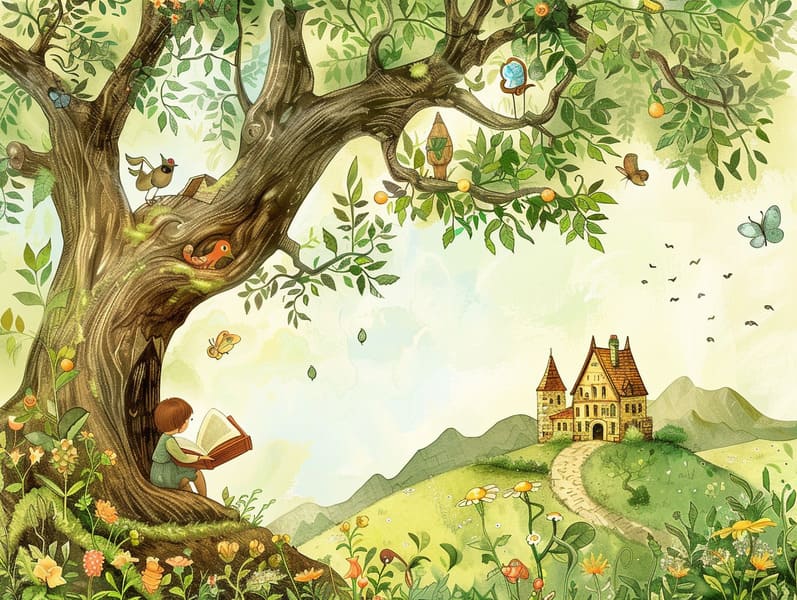The Dawn of Short Fairy Tales with the Invariable Delight.
The Dawn of Short Fairy Tales with the Invariable Delight.
Blog Article

Short fairy tales have old origins. These tales have been transmitted from one generation to the next centuries before they were ever documented. They developed from a variety of societies, including European traditions. They were initially transmitted among older generations, often carrying themes and messages aligned with the societal norms and beliefs of the time.
The renowned Brothers Grimm, Jacob and Wilhelm (the Grimm brothers), were among the first to compile and release many of these beloved stories. Their published works, "Grimm's Children's Stories," included stories like "Cinder Maid," "Hansel and Gretel," and "Snow-White and Rose-Red," which have since become classics in the world of famous fairy tales. Similarly, Andersen's fanciful narratives, such as "The Mermaid," and "The Duckling that Could," have captivated hearts worldwide, establishing their place in the pantheon of timeless fairy tales.
Though they are centuries old, classic fairy tales remain as important as ever, especially as nighttime stories for kids. These fantastical tales are now available in diverse formats, including artistically illustrated books, charming animations, and online fairy tales.
Their persistent charm can be connected to several magical reasons:
Life Lessons: Traditional fairy tales often offer important moral lessons. Tales like "The Tale of the Boy Who Cried Wolf" teach the benefit of integrity, while "The Race of the Tortoise and the Hare" point out the virtues of steadfastness and humility. These stories offer the young clear distinctions between right and wrong, guiding their moral compass in a kind yet profound way.
Empathy and Awareness: Classic fairy tales frequently showcase individuals facing challenges and problems, inciting audiences to feel with their struggles and cheer for their triumphs. For instance, "The Tale of Beauty and the Beast" conveys the necessity of valuing inner qualities to appreciate the true character of a being, strengthening insight and insight.
Cultural Perception: Many classic fairy tales are imbued with the cultural contexts from which they were born. Discovering these fairy tales can provide fascinating glimpses into different social structures, advancing a sense of world respect and understanding.
Imagination and Innovation: The fantastical elements in old fairy tales—mythical creatures—fire up children’s creative thoughts. These narratives guide readers to mythical realms, motivating imaginative dreams and a sense of astonishment that endures a lifetime.
Traditional fairy tales are not only fascinating but also illuminating. They serve as fascinating tools in building various thinking and feeling skills in young readers. When fairy tales are spoken out loud, they nurture verbal skills by read more introducing new terms and meanings and intricate sentence structures. This practice also develops hearing perception and mindfulness, as young readers remain attentive, anxious to see what happens next.
Furthermore, talking about the themes and characters of traditional fairy tales can nurture thought processes and thought processes. Young ones learn to pinpoint patterns, predict happenings, and figure out cause and effect. These explorations also encourage children speak out their thoughts and feelings, fostering their emotional intelligence.
In today’s high-tech era, the proliferation of online fairy tales has made these narratives more obtainable than ever. Internet resources and web apps extend large libraries of famous fairy tales that can be seen or listened to anytime, anywhere. Fairy tales narrated are particularly popular, featuring an entertaining method for kids to appreciate these fantastical tales. Voice books and narrated videos lead characters and settings to life, often supplemented by captivating sound effects and instrumentals that amplify the story journey.
The persistent attraction of old fairy tales lies in their ability to modify to today's society while maintaining their fundamental ideas. Contemporary updates of these stories often bring in more diverse characters and modern settings, making them pertinent to today’s audience. However, the central morals of courage, benevolence, and fair-mindedness remain unchanged, continuing to move kids of all ages.
Classic fairy tales also offer a sense of solace and knownness. They furnish a systematic narrative with a plain beginning, middle, and end, often coming to a close with the termination of conflicts and the triumph of rightness over wrongness. This reliability can be solacing for the young, spreading a sense of steadiness in an inconstant world.
Ancient fairy tales continue to fascinate and inform new generations, maintaining their attraction and impact in modern society. As children's night stories, they feature a perfect blend of wonder and wisdom, backing moral values, empathy, and creativity. The prevalence of web-based fairy tales and the widespread nature of fairy tales voiced warrant that these timeless stories remain obtainable to new generations.
By upholding and recounting these tales, we continue to laud the rich tapestry of cultural heritage and cultural heritage. Whether you are browsing a colorful picture book, perusing a web-based collection, or playing an sound book, the delight of Grimm's fairy tales is always within reach. These narratives illustrate of the steadfast spell of stories and its ability to bring us together across eras and regions.
Be it you are experiencing a gorgeously illustrated book, viewing a cyber library, or listening via an sound book, the beauty of ancient fairy tales is always within reach.
These stories reveal of the unchanging spell of narratives and its ability to connect us across centuries and lands, weaving a spell that enchants and educates alike.